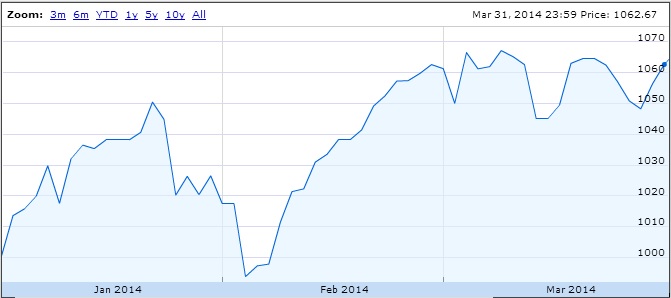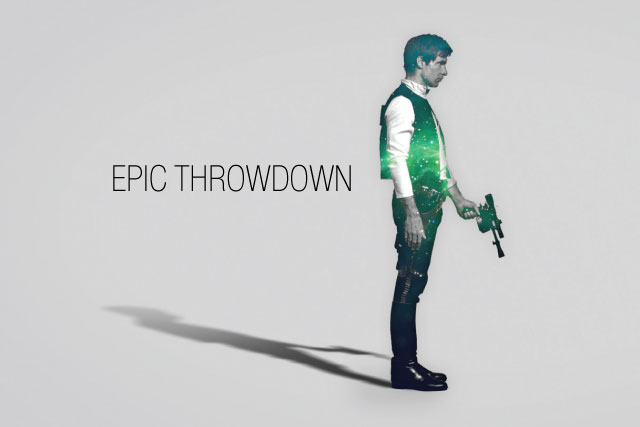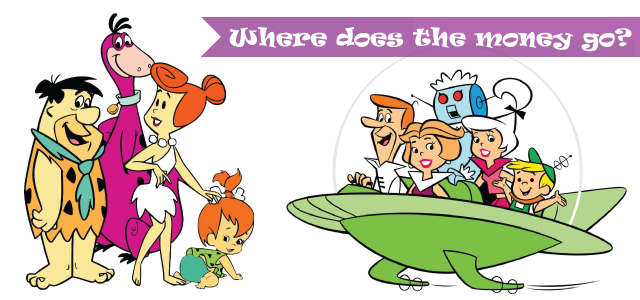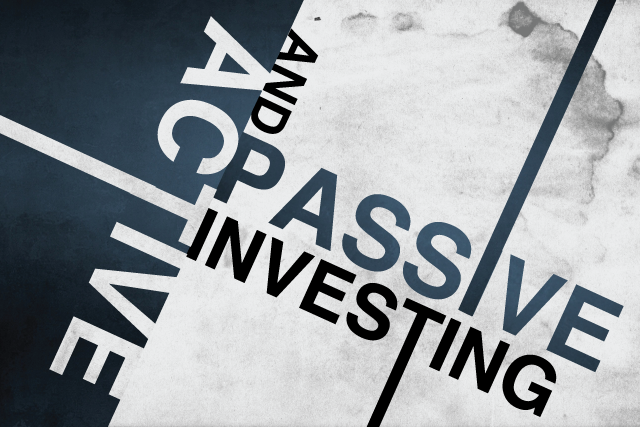Near the end of 2013, Jeff Rose of Good Financial Cents initiated a challenge for investors to grow $1000 over the course of a year. Drawing inspiration from the legendary rivalry between Han Solo and Boba Fett, he coined his challenge the Grow Your Dough Throwdown (GYDT). The purpose of GYDT, first and foremost, is to show newb investors how easy it is to invest. Putting his own money on the line, Jeff invested through several different online brokerages to demonstrate the many options and strategies. He tracks his investments’ monthly progress in his blog. At the end of the year, the throwdown should erase preconceived notions that investing is too difficult or requires a lot of money to start with.
The rules to the throwdown are simple:
1. Open a new broker account and deposit $1,000
2. On (or around) January 1st, invest the $1,000 any way that you want.
3. Buy or sell as much as you want.
4. You cannot add more than the original $1,000 to the account.
I’m no Kenobi when it comes to investing, but I was willing to take on his challenge. The prospect of going head-to-head with some of the heavyweights in personal finance seemed daunting at first. However, the more I thought about it, the more I realized how this would be a great opportunity to put some of the things I’ve learned over the past few months to the test as well as to learn from other GYDT participants.
Never tell me the odds
Active investing by choosing individual stocks to beat the market is like a playing Sabacc, a game of chance in the Star Wars universe. In Sabaac, a player’s hand may change at any time, and it is impossible to predict the outcome or winner. Statistically speaking, the ability to consistently select stocks that will beat the market is also impossible. Aware of the odds, I’m not willing to invest my hard-earned $1000- or the Millenium Falcon- in a game of luck. Instead, I’ll put to practice a passive strategy, investing in index funds to capture market gains (and losses) as a whole.
The Picks
For the throwdown, I put my money in the popular TD eSeries Index funds. The entire $1000 was invested in equity, leaving nothing in fixed income. This is, after all, a throwdown and I want to see if the “aggressive” indexing will beat out the individual stock pickers. I distributed the $1000 as follows:
[table]Description, Asset Allocation, Fund
Canadian equity,20%,TD Canadian Index – e (TDB900)
US equity,40%,TD US Index – e (TDB902)
International equity,40%,TD International Index – e (TDB911)
Canadian bonds,0%,TD Canadian Bond Index – e (TDB909)[/table]
Picks’ Rationale
I chose to go with the TD eSeries Index funds are because they are an easy way for beginners to get started with investing. Index investing doesn’t require the investor to have any specialized knowledge of the market or any individual stock. Building a portfolio with these funds is simple and uncomplicated. When it comes to investing “degrees of difficulty don’t count,” as said by Warren Buffet,
There are two advantages of investing in the TD eSeries for beginners: diversification and low costs.
Diversification
The GYDT competitors who opted to pick stocks are limited in the number and variety of stocks that they can buy with $1000. The small sum makes it difficult to buy shares from a sufficient number of companies in differing industries to properly protect their portfolios. This lack of diversification proposes a significant risk; if a particular company is to perform poorly, there would be a large impact of the value of the portfolio. To be fair- It is possible to choose a shooting-star of a company that could unproportionally boost the value of the portfolio, but it could just as easily fall out of favour. With my lack of knowledge and experience in picking stocks, finding that great performing company would be like looking for a needle in a haystack.
By investing in the eSeries indexed funds, I own a small portion of 1664 companies operating in multiple industries spread out across the world. The risk of poor performing companies is offset by all the companies which are performing well. The idea here, to borrow from the wisdom of John Bogle, is not to look for the needle in the haystack but rather to buy the entire haystack.
Lower Costs
Transaction costs associated with buying individual stocks, especially with small amounts, can cripple the amount set out to be invested. Assuming a transaction cost of $10/trade, purchasing stocks from 5 companies would cost $50 or 5% of the $1000 looking to be invested. It might possibility take a year to recoup the upfront transaction cost before seeing any return for the investment. Furthermore, individual stocks cannot be purchased in partial units, meaning that a remainder would sit in the portfolio as uninvested cash. Potential dividend distributions would also get paid out in cash without being automatically reinvested. The leftover cash would not participate in the market with no upside or downside potential causing a drag on the return.
There are no transaction costs to buying TD eSeries funds; however, they can only be purchased through the TD Direct Investing brokerage or through an eSeries Mutual Fund account opened with TD Canada Trust. Investing with these funds comes with an average 0.41% MER deducted off the entire portfolio amount each year. Unlike individual stocks, indexed funds can be purchased in partial units. As a result, the entire $1000 of the GYDT money, along with automatically reinvested dividends, can participate in the market to maximize its earning potential.
Punch it
Here’s a snapshot of the performance for Q1 of 2014:

[table]Date, Portfolio Value, Performance
“January 31, 2014”, “$1,017.46”, +1.93%
“February 28, 2014”, “$1,062.64”, +4.44%
“March 31, 2014”, “$1,062.67”, +0.004%
YTD, ,+6.46%*
Note, *Calculated using Modified Dietz Method,[/table]
The value of the fund has fluctuated quite significantly since the initial $1000 investment. The fund experienced a dip below the principal investment in early February due to the “crisis” in the emerging market. March saw a few dips of its own with markets reacting to the situation in Ukraine. Despite the doom and gloom, the market continued to experience it’s upward bullish trend and, subsequently, the portfolio has increased in value.
The Competition
From the bloggers reporting in their numbers for March in the GYDT March Update, my indexing portfolio is good enough for a 5th place position.
[table]#,Blog Name,Portfolio Name,March
1,Stacking Benjamins, ,”$1,105.64″
2,PT Money,Signal Speculator,”$1,086.75″
3,Canadian Finance Blog, ,”$1,081.57″
4,Dough Roller,Buy it Like Buffet,”$1,065.47″
5,Urban Departures,The Index Strikes Back,”$1,062.6″
6,Planting Money Seeds,Super Boring Dividends,”$1,055.15″
7,Frugal Rules,,”$1,029.53″
8,Working to Live,Julie’s Investment Experiments,”$1,016.00″
9,The College Investor, ,”$1,010.84″
10,Afford Anything,Blindfolded Monkey Experiment,”$986.96″
11,Good Financial Cents,Not-a-stock-picker portfolio,”$980.36″
12,House of Rose,Purple Passion,$961.99
13,Investor Junkie,Grow your..Doh!,$961.04
14,Free From Broke,,$958.50
15,Consumerism Commentary,Feemageddon,$937.13[/table]
Great kid, don’t get cocky
From the looks of it, I’m off to a good start. Over the long term, I anticipate that my passive portfolio would result in higher returns compared to one containing individually picked stocks. That may or may not prove to be the case over the course of the year. While I think that it is possible to beat the index, I think that the probability of beating it consistently is very unlikely. If I was a betting man, I’d venture to say that I’ll remain within the top 8 but only time will tell. In the mean time, I’m going to continue investing our money based on the assumption that we won’t be touching it again until we retire. At this point with 9 months to go, it could still be anyone’s ballgame. I’m looking forward to how this throwdown will shape out. Stay tuned for more updates!
Disclaimer
The content in this post is for informational purposes only and is not intended to provided specific investment advice or recommendations. Actions taken without the consultation of a trusted advisor may result in an untimely demise similar to that of Boba Fett- swallowed by the almighty Sarlacc. The portfolio performance represented is historical and there is no guarantee of future results. Warned, you have been.
Do you have any predictions?




